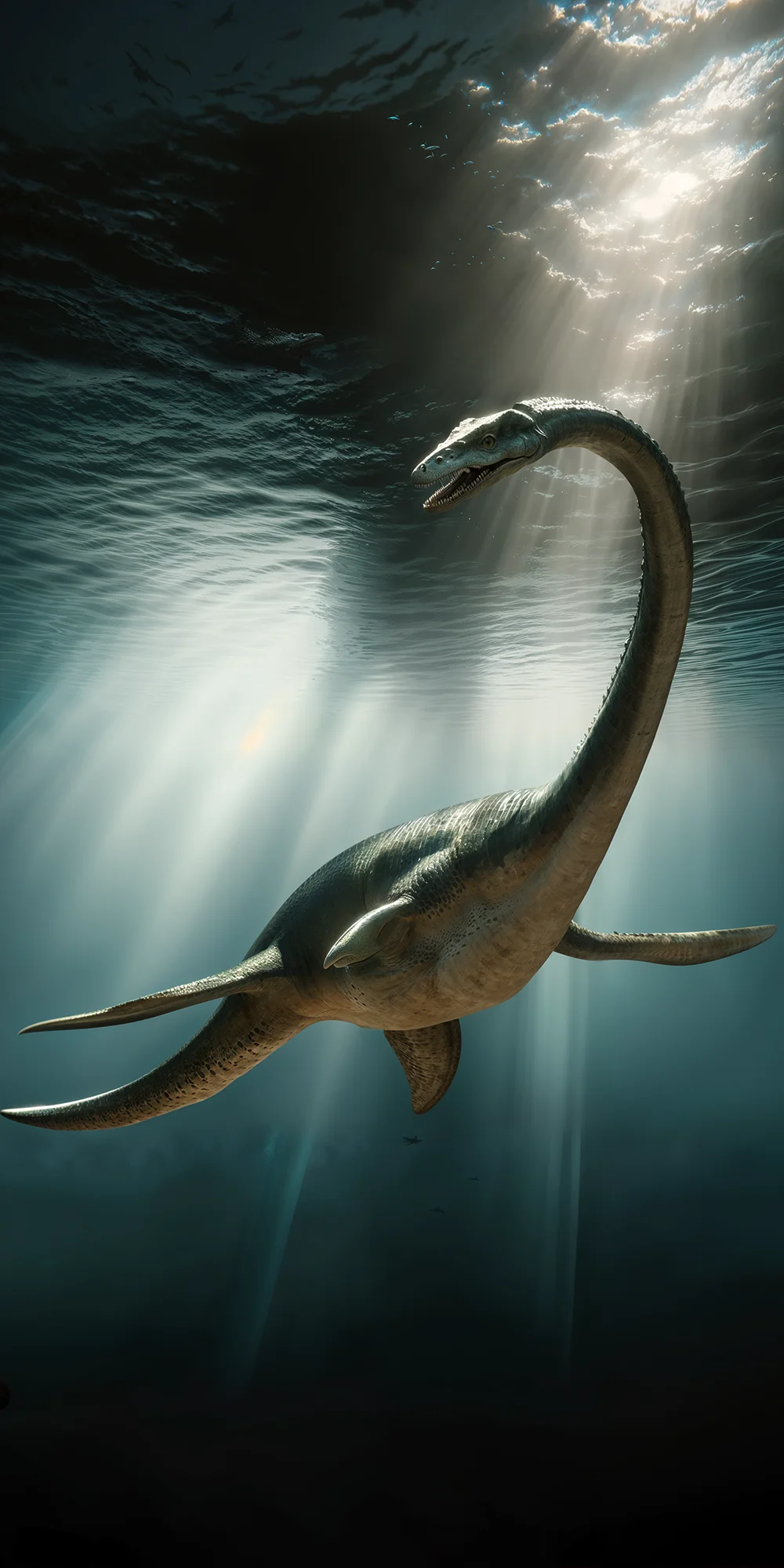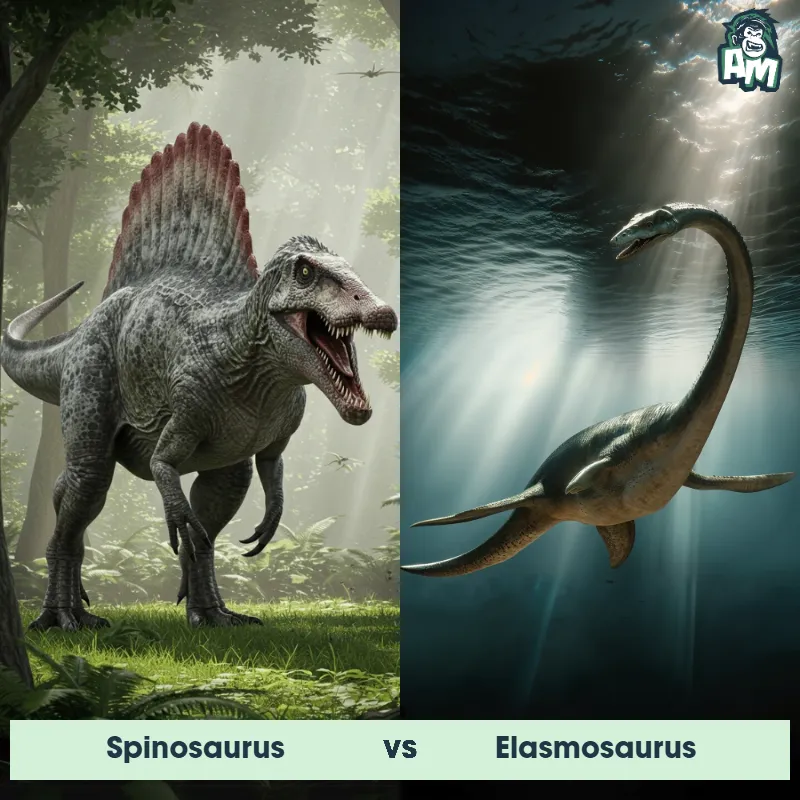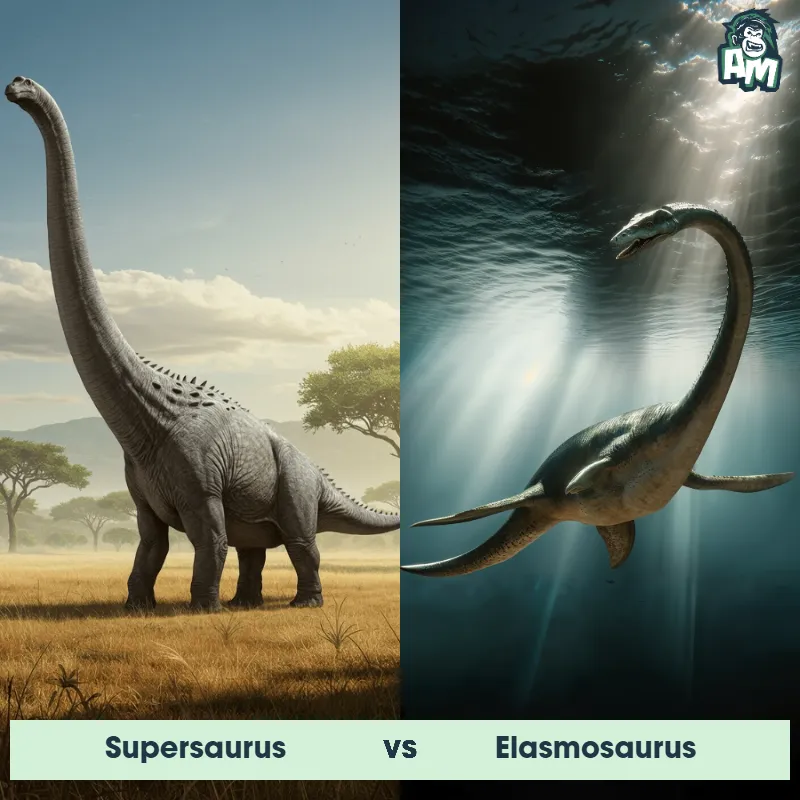The Elasmosaurus
The Elasmosaurus, also known as the "long-necked lizard", was a large marine reptile that lived during the Late Cretaceous period. It was characterized by its extremely long neck, which consisted of over 70 vertebrae. With paddle-like flippers and a sleek body, it was well adapted for swimming in ancient seas.

| Elasmosaurus | |
|---|---|
| Size | Up to 46 feet (14 meters) in length |
| Weight | Approximately 3-4 tons (2,721-3,628 kilograms) |
| Speed | 12-18 mph (19-29 km/h) |
| Key Strength | Long reach with neck |
| Biggest Weakness | Limited mobility on land |
| Scientific Name | Elasmosaurus |
| Family | Elasmosauridae |
| Habitat | Marine |
| Geography | Late Cretaceous Period |
| Diet | Small fish and other marine creatures |
| Lifespan | 25 years - 30 years |

The Elasmosaurus
The Elasmosaurus, also known as the "long-necked lizard", was a large marine reptile that lived during the Late Cretaceous period. It was characterized by its extremely long neck, which consisted of over 70 vertebrae. With paddle-like flippers and a sleek body, it was well adapted for swimming in ancient seas.
Fun Fact: Despite its long neck, Elasmosaurus had a relatively small head proportionally, making it more agile and efficient in catching prey underwater.
| Elasmosaurus | |
|---|---|
| Size | Up to 46 feet (14 meters) in length |
| Weight | Approximately 3-4 tons (2,721-3,628 kilograms) |
| Speed | 12-18 mph (19-29 km/h) |
| Key Strength | Long reach with neck |
| Biggest Weakness | Limited mobility on land |
| Scientific Name | Elasmosaurus |
| Family | Elasmosauridae |
| Habitat | Marine |
| Geography | Late Cretaceous Period |
| Diet | Small fish and other marine creatures |
| Lifespan | 25 years - 30 years |
Elasmosaurus Matchups
We use AI to simulate matchups between the Elasmosaurus and other animals. Our simulation considers size, strength, and natural predatory behaviors to determine the most likely outcome.

Can't find the Matchup you want?
Create Your Own MatchupElasmosaurus: Diet, Predators, Aggression, and Defensive Behaviors
What did Elasmosaurus eat?
Elasmosaurus were believed to have been carnivorous predators, feeding primarily on fish and other small marine organisms. They had long necks that allowed them to reach out and capture prey with their sharp teeth.
Did Elasmosaurus have any predators?
Although Elasmosaurus was a formidable predator in its marine environment, it likely faced competition from other large marine reptiles such as mosasaurs and sharks. Larger predators may have posed a threat to juvenile or injured Elasmosaurus individuals.
Were Elasmosaurus aggressive?
Due to their size and predatory nature, it is believed that Elasmosaurus were aggressive hunters when pursuing their prey. They likely used their long necks to ambush and capture food in the water.
Did Elasmosaurus fight?
Elasmosaurus may have engaged in physical combat with other individuals for territory or mating rights. However, there is limited direct evidence of combat behavior in Elasmosaurus fossils.
How did Elasmosaurus defend themselves?
Elasmosaurus likely relied on their size, speed, and agility to evade potential threats in their marine environment. Their long necks could also have been used defensively to keep predators at bay or to strike out at threats.
What was the biggest weakness of Elasmosaurus in a fight?
One of the biggest weaknesses of Elasmosaurus in a fight may have been their long and relatively flexible necks. While useful for capturing prey, a strong blow to the neck could potentially incapacitate or even kill an Elasmosaurus in combat.
Fun Fact: Elasmosaurus is often mistakenly depicted as having its head at the end of its neck like a modern-day snake, when in reality it held its head upright at the top of its long neck.
Fun Fact: The first fossils of Elasmosaurus were discovered in Kansas in the 1860s by American paleontologist Edward Drinker Cope, sparking a great scientific rivalry known as the Bone Wars with his counterpart Othniel Charles Marsh.












